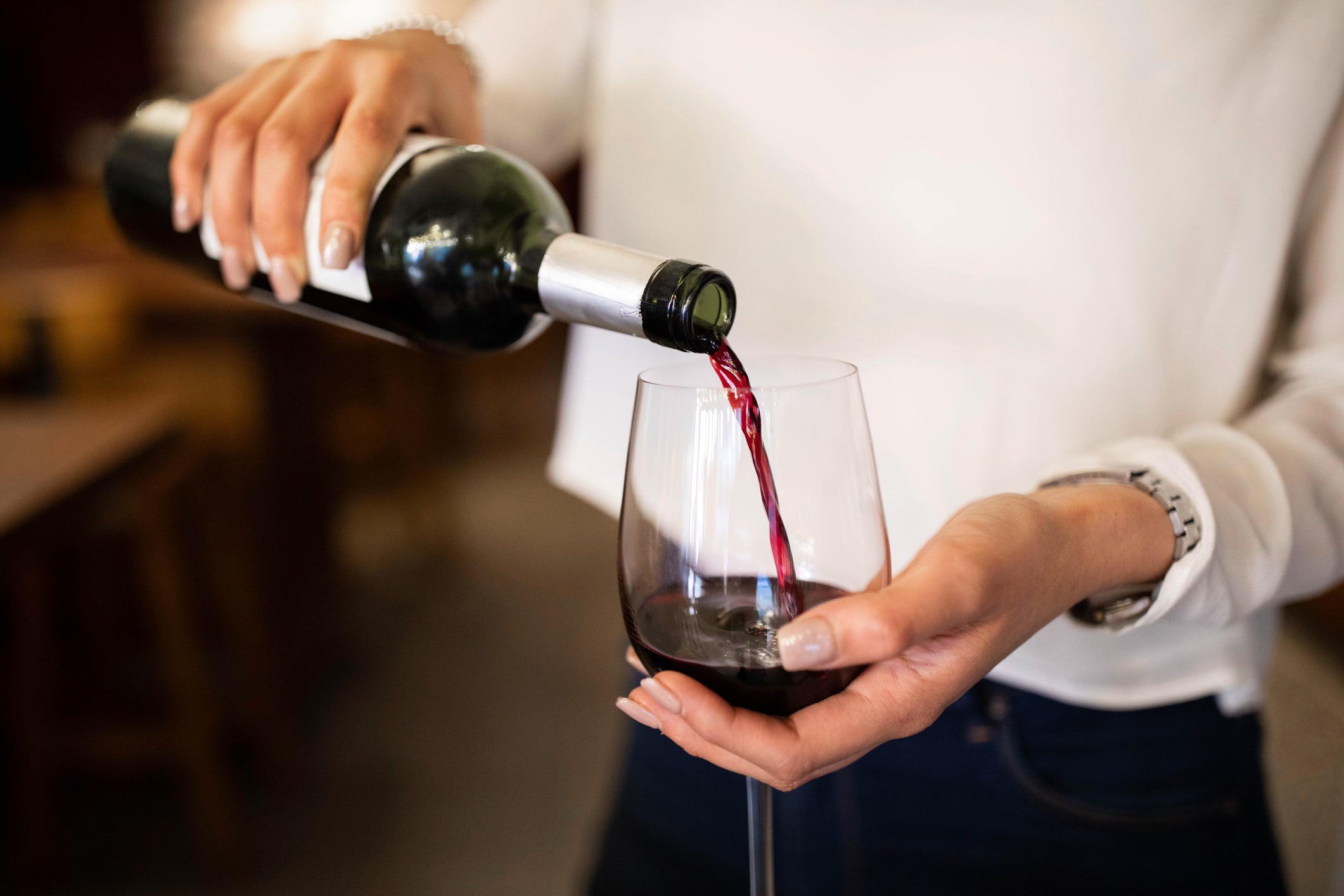Picking wine from a list? Here’s why you shouldn’t be afraid of the house tipple (and other tips)
Contrary to popular opinion, picking the second from the top of the wine list isn’t always the best choice, writes wine expert Rosamund Hall. Here’s how to make yourself look like a true connoisseur the next time you’re dining with friends


Ordering a bottle of wine from a restaurant can sometimes feel like trying to crack the Enigma code. The process can feel so shrouded in mystery that it can often be tempting to bask in the safety of a familiar name. But I’m here to tell you that good value doesn’t always lie in safety.
Before I go on, it’s important to understand how most wine list pricing works. On average, restaurants work on a gross profit margin of around 75 per cent on wine. Before you feel shocked about that number, just look around at your surroundings next time you’re out for a meal – they have staff to pay, rooms to heat and (hopefully) a modicum of profit to make too.
So, you can estimate that if you’re ordering a £32 bottle of wine, then the restaurant probably paid £8 for it. If you’re in a super fancy place, you should be prepared to accept super fancy prices. But there are tricks you can use to find a bargain.
If you go out for dinner with me, you might instinctively hand me the wine list, sit back and relax, with the expectation that because I’m an “expert” I’ll know exactly what to pick. However, while I may have a larger and deeper wine knowledge than some, that doesn’t mean I have an encyclopaedic knowledge of all producers and their wines. In fact, the glorious thing about my chosen career is that it should keep me entertained for a lifetime – I can’t possibly ever come close to knowing everything about wine.
While I can have a pretty good stab at ordering something tasty from a wine list, it does come with inherent pressure, especially if I’m ordering for a crowd. There’s a range of tastes and budgets to appease. So, how do I navigate a list?
Firstly, I don’t pick the wine that’s second from the top of the list – unless, of course, I really like the sound of it. There is a common misconception that the top-but-one spot offers diners the best choice – you don’t look like a cheapskate for ordering the “house” wine, but you’re not breaking the bank by heading any further down the list.
Unfortunately, it’s often a space where less-than-scrupulous establishments may prey on your vulnerability. I’ve often heard about sommeliers actually putting a lower-price wine there, and charging more for it. It’s a shameful practice, but definitely believable.
So if you’re looking to play it safe, go for the house wine – any decent restaurant should be proud of its house pour. It’s a reflection of the business as a place and should be delicious and excellent value for money.
Next up, don’t order chablis. I very rarely order wine from a famous region – forget names like Bordeaux and anything from Burgundy. Why? It’s not because I don’t love these wines but because being safe and familiar often means higher prices.
I was shocked recently to see a very entry-level picpoul de pinet on a list for £48. It was a blatant way to rip off people who were looking for a familiar name. By the same token, I advise you to avoid pinot grigio and malbec, too.
I always seek out the lesser known, and you should too. Look for unfamiliar grape names and regions. I know it might sound bold but there’s a high chance the sommelier loves those wines and knows they’re rather esoteric, and has most likely priced them accordingly.
Some of my best wine choices have been when I’ve gone off-piste – think unpronounceable Greek names, countries not necessarily famed internationally for wine – Romania makes some great-value pinot noir, for example. If something stands out as being rather specialist, then chances are they’re the passion of whoever wrote the list and are probably great value for money.
Of course, there’s the really obvious tip – just ask! More importantly than that, state your budget. Sommeliers aren’t multimillionaires who don’t understand the real world and the financial pressures we’re all facing – they’re normal people just like you and me. Say what you’re after, and how much you’re willing to spend. It’s their job, and they’ll enjoy the challenge of finding something that you’re going to love.
Finally, if you’ve got a very special bottle at home that you fancy enjoying with something a little more polished than your usual spag bol, then you can always enquire about corkage. It’s not something that many restaurants shout about, but many do offer it, with prices starting as low as £10 and normally averaging at about £25 (although, as with anything, expect to pay more in a Michelin-star restaurant).
I really believe the UK is one of the best places in the world to drink wine. While they may be getting more expensive (thanks, Brexit and taxation), some of the most exciting wines being produced globally are imported to our shores and are just waiting for you to discover them.
So next time you’re out with friends, pass on the pinot and take a punt on something you don’t know – that parellada or pignoletto may just be the tastiest wine you’ve ever had.
Rosamund Hall (DipWSET) is a freelance writer and wine expert
Join our commenting forum
Join thought-provoking conversations, follow other Independent readers and see their replies
Comments
Bookmark popover
Removed from bookmarks